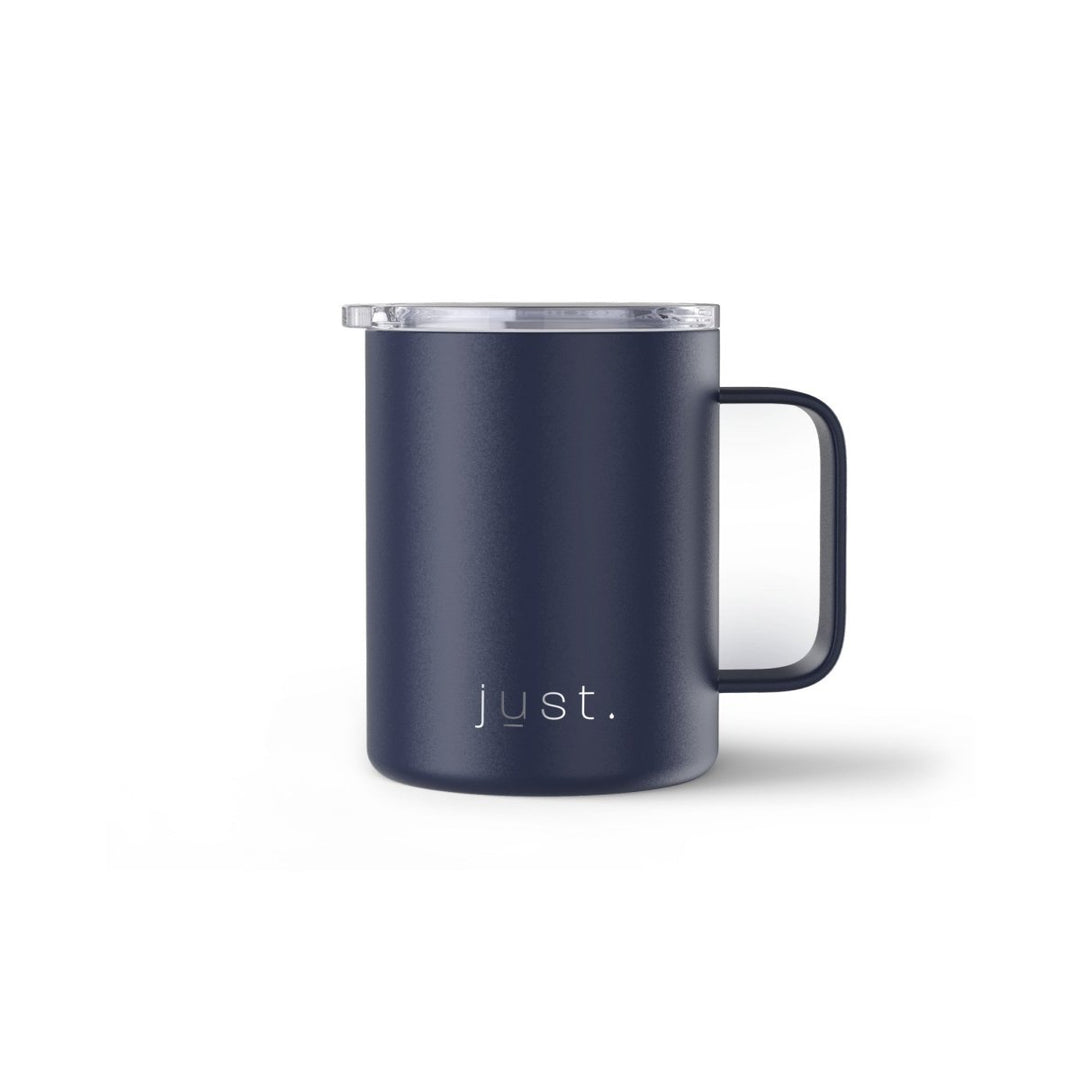Top Tips For Buying Reusable Water Bottles in 2023
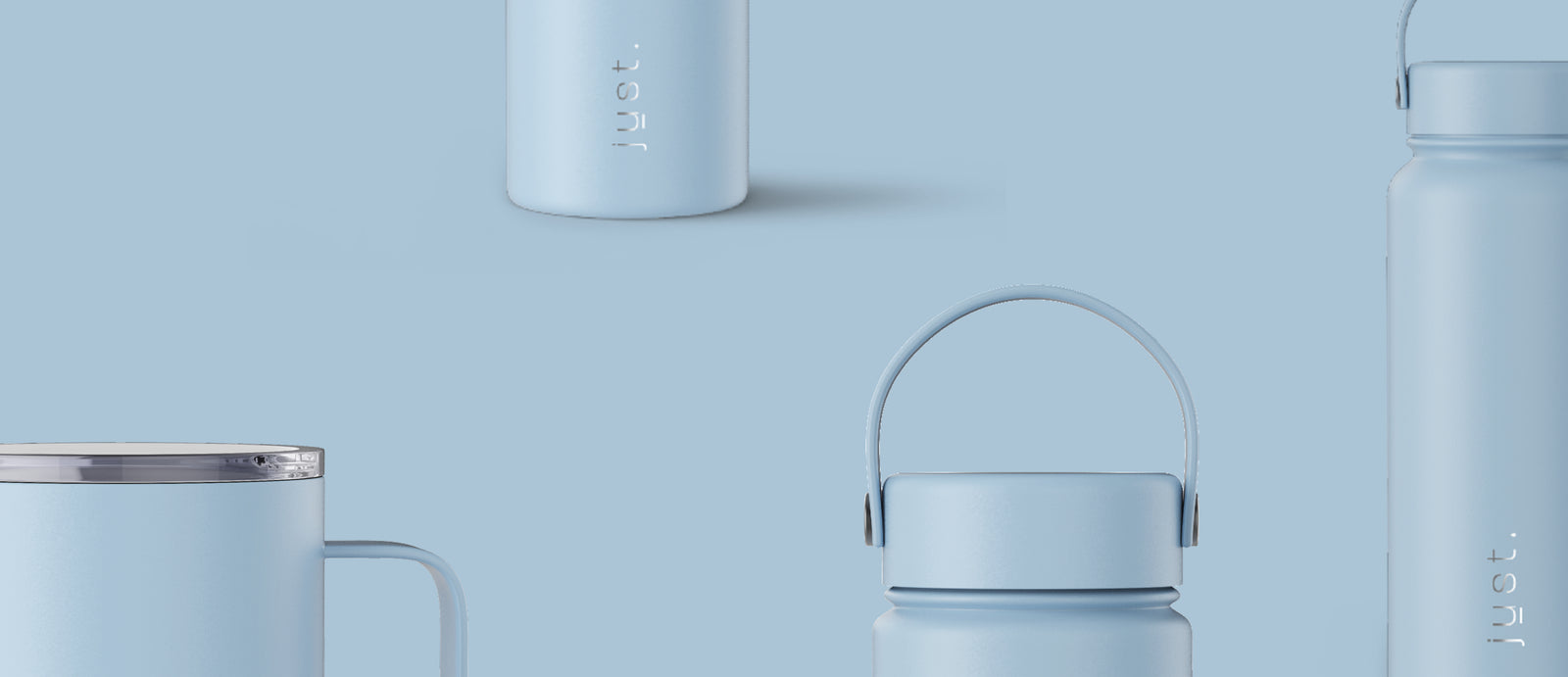
What are the best water bottles to buy?
In 2023, the choice of reusable water bottles is better than ever, catering to the diverse demands of today's health-conscious and environmentally aware consumers. When embarking on the journey to find the perfect water bottle, several key features should guide your decision-making process.
First and foremost, the material of the bottle is paramount. Stainless steel bottles have surged in popularity, offering exceptional durability, resistance to corrosion, and the ability to maintain your drink's temperature, be it icy cold or piping hot, for extended durations.
The double-walled vacuum insulation technology in these bottles is a game-changer, ensuring that your beverage stays at the desired temperature, providing refreshment whenever you need it. If you’re new to the world of reusable water bottles, we will expand on these features and help you decide what you need and what works best for you.
For those looking for an alternative eco-conscious option, without any temperature regulation features, glass water bottles are a fantastic choice. They are free from harmful chemicals compared to plastic and are non-reactive which mens you’ll have a fresh tasting water all day.
Moreover, glass bottles are fully recyclable, making them an environmentally responsible choice. However, they may be less suitable for rugged, on-the-go use due to their fragility. A new trend in 2023 is Tritan plastic, these bottles are lightweight but are they better for the environment than normal plastic? We will dive into this subject later in this article.
An important yet overlooked decision when looking buy a reusable water bottle is the design and colour. After all if you don’t love the look of your bottle, you won’t use it as much.
Most water bottle brands offer a variety of designs and colours, allowing you to express your personal style while staying hydrated throughout the day.
When considering the best water bottle for your needs, also choose features like leak-proof design and ease of cleaning. A leak-proof bottle ensures that you can toss it into your bag without any worries of spills, while easy-to-clean bottles make maintenance a breeze, encouraging consistent use.
Additionally, take into account the size of the bottle to suit your daily hydration goals, whether you prefer a compact design for easy portability or a larger capacity for fewer refills. Wide mouth bottles are a great choice because they are easy to clean, we will explore more benefits of wide mouth bottles later in the article.
In essence, the best water bottle for you is the one that aligns with your preferences and lifestyle, encouraging you to stay hydrated and contribute to the reduction of single-use plastic waste. With the wide variety of choices available in 2023, finding that ideal water bottle has never been easier.
What Size Water Bottle works best for me?
There are many different sizes of water bottles on offer, choosing the right size for your water bottle is a decision that should align with your specific daily activities and hydration requirements. Here's a breakdown of some common bottle sizes and their ideal uses:
1-Litre Bottles: These larger bottles are perfect for intense workouts at the gym or for any physical activity that results in substantial fluid loss. The 1-litre capacity (32 ounces of water) ensures you have an ample supply of water to stay hydrated during extended exercise sessions. They're also a practical choice for those who prefer to minimise the number of refills throughout the day, whilst still being easy to carry or fit in a bag. Once thing to consider is if you use the bottle whilst driving, 1L bottles will not fit in cup holders due to the size of the base.

2-Litre Bottles: If you're planning a day-long adventure like camping, hiking, or a picnic with friends or family, a 2-litre large size bottle is an excellent choice. Its generous capacity ensures you have enough water to stay hydrated while minimising the need to carry multiple bottles. It will be heavy when full, but if you're somewhere that doesn't have somewhere to refill your bottle, 2 litres is the best option.
750ml or 550ml Bottles: These sizes strike a balance between capacity and portability, making them ideal for everyday use. They're convenient to carry during commutes, work, or leisure activities when you have opportunities to refill. Most 550ml bottles are cup holder compatible, making them the ideal bottle if you're driving.
350ml Bottles: Designed with kids in mind, these smaller bottles are perfect for children to carry to school or for outdoor activities. They are lightweight and easy for little hands to manage. The smaller capacity ensures kids can finish their drinks without feeling overwhelmed making them the best choice for you little ones.
Ultimately, the best bottle size for you depends on your unique needs and routines. Consider your daily activities, the duration you'll be away from a water refill station, and your personal preferences for ease of carrying and drinking. Having a variety of bottle sizes on hand can be beneficial, as it allows you to choose the most suitable option for any given situation, ensuring you stay properly hydrated throughout the day.
Reusable water bottles v single use plastic water bottles
In 2023 there isn’t much of a debate anymore over whether reusable water bottles or single use plastic bottles are a good option, due to the growing awareness of environmental issues and the need to adopt sustainable practices. The choice between these two options holds significant implications for the environment, our health, and the economy. Nevertheless, let's have a closer look into the comparison to understand the advantages and disadvantages of each.
Reusable Water Bottles
Reusable water bottles can be refilled with water or other beverages, reducing the need for single-use plastic bottles. Here are some key advantages of using reusable water bottles:
1. Environmental Impact: Reusable water bottles significantly reduce plastic waste. By choosing to use a single reusable bottle, an individual can prevent hundreds, if not thousands, of single-use plastic bottles from ending up in landfills or oceans.
2. Cost-Efficiency: Although the upfront cost of purchasing a reusable water bottle may be higher than buying a single-use bottle, in the long run, it's far more cost-effective. Continuous purchases of single-use bottles add up, making reusable options more economical over time.
3. Health and Safety: Reusable water bottles made from high-quality materials are designed to be safe and durable, minimising potential risks associated with chemicals leaching into the contents. This is a significant advantage over single-use plastic bottles, which can potentially leach harmful substances over time, especially when in direct sunlight or hotter environments.
4. Customisation and Features: Reusable bottles offer customisation options in terms of size, design, and features like straw lids, insulation, or built-in fruit infusers. This allows users to tailor their bottle to their preferences and lifestyle, reusable bottles generally have a lot more colour choice too because manufacturers can print colour directly onto the surface if it’s made of metal.
5. Temperature Control: A great option is an insulated water bottle that keeps drinks cold or hot for extended periods. This can be especially convenient for people who prefer their cold beverages to keep cold all day, or for hot water temperature drinks like tea or coffee.
Single-Use Water Bottles
Single-use water bottles, predominantly made of PET (polyethylene terephthalate) plastic, are intended for one-time use and are then discarded. Here are some aspects of single-use water bottles to consider:
1. Convenience: Single-use water bottles offer convenience, that’s whey they were so popular in the first place. They are widely available, easy to grab on the go, and require no maintenance or cleaning.
2. Recyclability While single-use bottles are recyclable, the rate of actual recycling is extremely low. Many bottles still end up in landfills, contributing to pollution and environmental degradation.
3. Environmental Impact: The production and disposal of single-use plastic bottles have a significant negative impact on the environment. The extraction of raw materials, manufacturing, transportation, and the waste generated contribute to pollution and climate change.
4. Micro plastics: Leading from point number 3, one concerning aspect directly linked to single-use plastic bottles is the prevalence of microplastics. Microplastics are tiny plastic particles less than 5mm in size, often originating from the breakdown of larger plastic items or microbeads in personal care products. Single-use plastic bottles, made of PET plastic, are a significant source of micro plastics.
As these bottles degrade over time due to environmental factors like sunlight and friction, they break down into smaller and smaller pieces, eventually becoming microplastics. These minuscule particles infiltrate our ecosystems, including oceans, soil, and air, posing a threat to marine life, wildlife, and potentially even human health as they can accumulate in the food chain. By reducing our consumption of single-use plastic bottles and opting for reusable alternatives, we can play a vital role in mitigating the proliferation of microplastics and curbing the broader environmental impact they pose.
4. Cost Over Time: While buying a single bottle is inexpensive, the cumulative cost of continuously purchasing single-use bottles over time is considerably higher than investing in a reusable bottle.
In conclusion, the environmental, economic, and health benefits of using reusable water bottles in everyday life make them easily the superior choice over single-use water bottles. Reusable bottles reduce waste, save money, and contribute to a more sustainable and eco-friendly lifestyle. Transitioning to reusable water bottles is a small yet impactful step towards a greener future and a healthier planet.
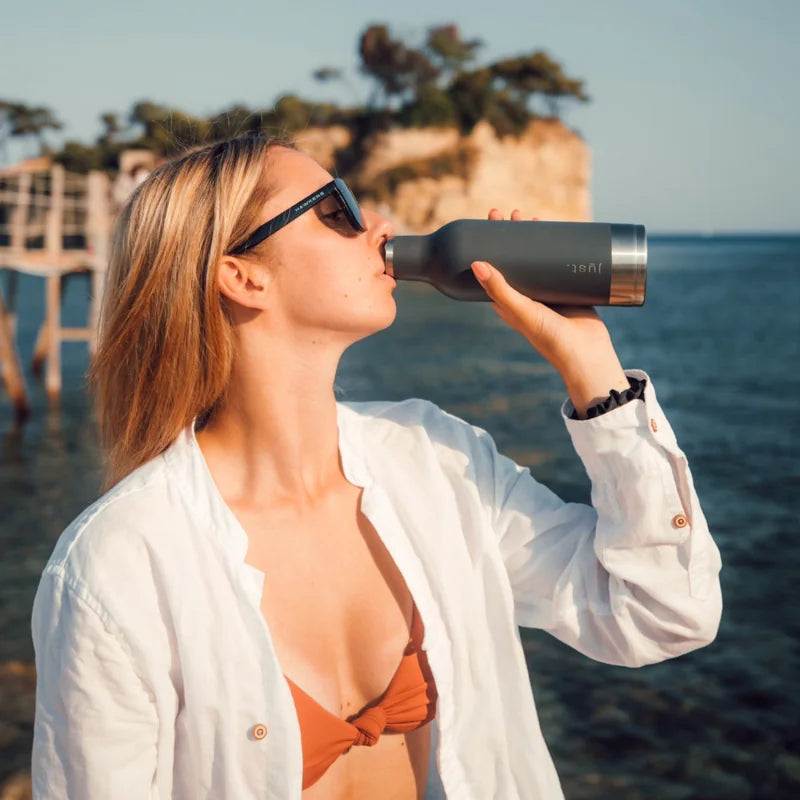
Are Stainless steel bottles really better than the rest?
When evaluating the materials used in the construction of reusable water bottles, stainless steel is a standout choice, often regarded as the premium option. Stainless steel bottles are widely recognised for their superior quality and are the most popular choice for most individuals seeking a sustainable and safe hydration solution. Here’s why:
Safety and Non-Reactivity: Stainless steel bottles are crafted from food-grade stainless steel, a material known for its non-reactive properties. Unlike some other materials like aluminum, stainless steel does not react with the beverages it contains, ensuring that your drinks remain fresh, with no alteration in taste or composition. This is particularly crucial when storing acidic or alkaline liquids, as stainless steel guarantees the purity and quality of your drink, making it a safe option for daily use.
Durability and Longevity: Stainless steel water bottles are renowned for their exceptional durability. They can withstand the rigours of daily life, including accidental drops and impacts, without breaking or deteriorating in quality. The longevity of stainless steel bottles also means a reduction in waste generated by constantly replacing disposable or less durable alternatives. This aspect aligns well with the principles of sustainability and contributes to a healthier planet.
Temperature Control: One of the great features of stainless steel bottles is their ability to regulate the temperature of the drinks they hold. Whether you prefer your drinks icy cold on a hot summer day or a piping hot tea in winter, stainless steel bottles with double-walled vacuum insulation provide exceptional temperature control. This makes them versatile for various climates and seasons, appealing to a broad range of users with diverse preferences.
Eco-Friendly: Choosing a stainless steel water bottle aligns with environmentally conscious practices. By opting for a reusable stainless steel bottle, you significantly reduce the consumption of single-use plastic bottles, which often end up in landfills and oceans, contributing to pollution and environmental harm. Stainless steel is fully recyclable, meaning that even at the end of its long life, it can be repurposed, further minimising its environmental impact. Because they are fully recyclable, they are usually made with up to 70% recycled steel in the first place, making they the most eco-friendly option overall.
Stainless steel water bottles are undoubtedly a top-tier choice, offering a blend of safety, durability, temperature regulation, and sustainability. Their long-lasting quality, non-reactive nature, and eco-friendliness make them the preferred option for most people.
What is Double-wall vacuum insulation?
As mentioned in the previous section, temperature control of your drinks is a direct result of double-wall vacuum insulation, usually associated with stainless steel reusable bottles.
Double-wall vacuum insulation is a design feature aimed at enhancing the thermal performance of the bottle, allowing it to maintain the desired temperature of the liquid inside for an extended period. This technology involves two layers of stainless steel with a small vacuum gap in between the two layers.
The vacuum (absence of air) is a poor conductor of heat, which minimises heat transfer through the bottle. This means that heat from the external environment has difficulty reaching the contents within the bottle, be it a hot beverage like coffee or a cold drink like iced water.
Consequently, beverages stay hot or cold for hours, providing unmatched convenience and an enjoyable drinking experience regardless of the external temperature. The double-wall construction combined with the vacuum insulation effectively minimises temperature exchange, ensuring your drink retains its intended temperature, high quality stainless steel bottles will typically keep drinks cold for up to 24 hours and hot for 12 hours.
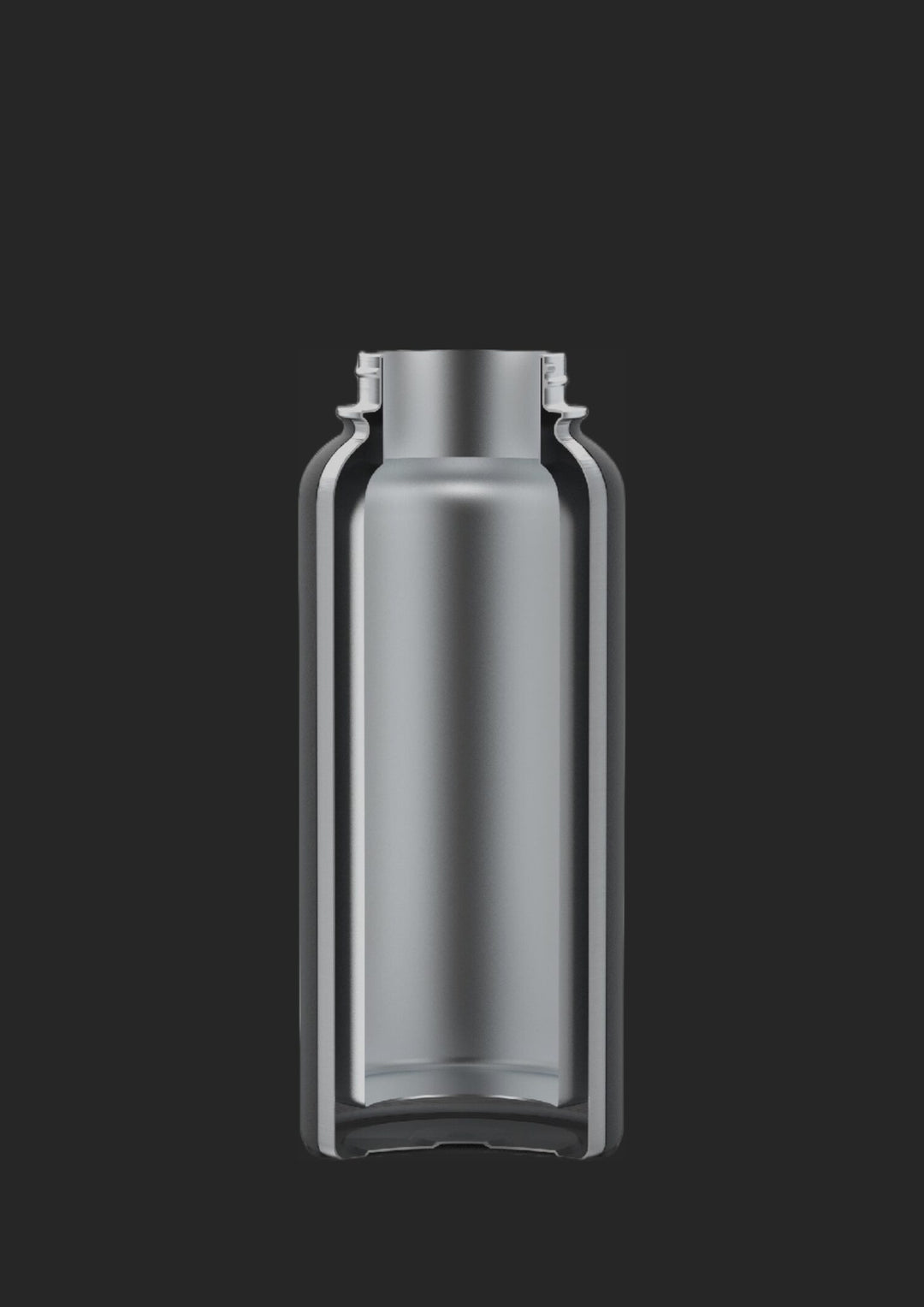

Should I buy a glass bottle?
Although stainless steel bottles are considered the most premium option, another material to consider is glass. Glass bottles present a compelling alternative for those seeking a safe, sustainable, and eco-friendly option for reusable bottles.
Glass is renowned for its purity and lack of reactivity, ensuring that it doesn't leach any harmful chemicals into the contents it holds, just like stainless steel. This is particularly important when it comes to your daily water intake, as it guarantees fresh taste and quality. Glass is also free from any potential metallic taste that some users might associate with low quality metal bottles made with aluminium.
However, it's important to note that glass does come with the downside of fragility. Glass bottles are more susceptible to breakage or damage compared to their stainless steel counterparts.
Accidental drops or impacts can lead to cracks or shattered glass, rendering the bottle unusable. This fragility can be a significant concern for those who lead an active lifestyle or for parents considering options for children. If you do choose a glass bottle, make sure to buy one that comes with a silicone sleeve to protect the glass as much as possible.
Ultimately, the decision to purchase a glass bottle should consider both its benefits and fragility, weighing your lifestyle and preferences for a safe and sustainable hydration solution.
Choosing Your Lid Type: Finding the Perfect Match for Your Water Bottle
The lid type plays a crucial role in ensuring convenience, functionality, and ease of use. Among the many options available, the flip lid, sports lids with built-in straws, and wide mouth lids with additional smaller caps like the 'swig lid' from Just Bottle stand out as popular choices. Each option offers unique benefits, catering to various lifestyles and preferences.
Do You Need a Handle?
A water bottle with a handle can be a game-changer for those constantly on the go. The handle provides a comfortable and secure grip, making it easy to carry your bottle during hikes, workouts, or everyday errands. It allows you to hook the bottle onto your finger or attach it to your bag, ensuring you always have hydration within reach. Additionally, the handle can be particularly useful for children or individuals with mobility challenges, providing a hassle-free way to carry their water.
Sports Lids with Straws: Sipping Made Simple
If your playing sports or at the gym and need a quick drink with minimal spillage, sports lids with straws are an excellent choice. These lids are designed for effortless hydration during workouts, outdoor activities, or even while driving. The straw allows you to drink without tilting the bottle or unscrewing the lid, making it convenient and efficient. Plus, the straw design minimises the risk of accidental spills, ensuring your focus remains on your activity, if you're cycling for example.
Wide Mouth Lids with Additional Caps: Versatility at its Best
Wide mouth lids, often accompanied by smaller caps like the 'swig lid,' from Just Bottles Co-brand bottle range offer versatility for various drinking preferences. The wide opening allows for easy filling, cleaning, and adding ice or fruits to infuse your water. The additional smaller cap on top, provide an easy opening option for controlled sipping, allowing you to tailor your drinking experience. This versatility makes wide mouth lids a popular choice for those seeking adaptability in their water bottle usage.
Selecting the right lid type with unique features is a personal choice based on your lifestyle, activities, and preferences. Whether you prioritise convenience, efficient sipping, or versatility, there's a lid type designed to meet your needs. Evaluate your routine and requirements to determine the lid type that complements your lifestyle and enhances your hydration experience.
The benefits of wide-mouth water bottles
Wide-mouth water bottles, characterised by their large opening at the top, offer a range of benefits. Firstly, the wider mouth of the bottle facilitates easy filling, cleaning, and adding of ice cubes. This feature is especially advantageous when you're in a hurry or need to refill your bottle quickly. It also allows for hassle-free addition of fruits or supplements for infused drinks, enhancing your hydration experience.
The wider opening makes it simpler to drink directly from the bottle, whether you're sipping water, a smoothie, or any other beverage. It's particularly useful for those who prefer gulping larger amounts of liquid at once or require a more significant flow for hydration during workouts or outdoor activities.
Additionally, the wide mouth makes it easier to wash the interior thoroughly, ensuring the bottle remains clean and free from any lingering odours or residues. This promotes a more hygienic use, enhancing your overall experience with the bottle.
Wide-mouth water bottles are a practical choice for individuals seeking convenience, versatility, and ease of use in their hydration routine. The broader opening simplifies filling, drinking, and cleaning, making it an ideal option for a diverse range of drinks and activities, particularly outdoor, sports or adventure activities.

What does BPA free mean?
"BPA free" refers to products or materials that do not contain bisphenol A, a synthetic compound used in the production of certain plastics and resins. Bisphenol A (BPA) is a chemical that has been widely utilised in the manufacture of plastics since the 1960s, finding its way into various consumer goods such as water bottles, food containers, canned food linings, medical devices, and more. However, over the years, concerns have arisen about the potential health risks associated with BPA exposure, particularly when it leaches into food, beverages, or the environment.
Studies have indicated that BPA can mimic the hormone estrogen when it enters the body. As an endocrine disruptor, it can interfere with the endocrine system's normal functioning, potentially leading to various health issues, including hormonal imbalances, developmental problems, reproductive disorders, and an increased risk of certain chronic diseases. Consequently, the demand for products labeled as "BPA free" has surged, especially in containers and products that come into contact with food and drinks.
Manufacturers produce BPA-free alternatives using other compounds or materials that do not pose the same health risks. Choosing BPA-free products provides consumers with a safe option to reduce their exposure to potentially detrimental substances, contributing to a healthier lifestyle and promoting more conscious consumer choices.
Responsible water bottle brands will always use BPA free plastic in components that need to be made with plastic like the bottle lid.
What is Tritan plastic and what are the pros and cons?
Tritan plastic is a relatively new addition to the world of plastics. It is a BPA-free co-polyester material that has gained substantial popularity for its unique blend of features, making it a preferred choice in the production of various consumer products, especially water bottles and containers.
One of the advantages of Tritan plastic is its durability. It is shatter-resistant and can endure rough handling without breaking, unlike other water bottle options like glass. This durability lends itself to a longer lifespan of the product, reducing the need for replacements and minimising environmental impact compared to single-use plastic bottles through reduced waste.
Tritan plastic can be molded into various shapes and sizes, providing manufacturers with the flexibility to create a wide range of products that cater to diverse consumer preferences. This includes water bottles, food storage containers, baby bottles, kitchenware, and even medical devices.
Tritan plastic is also known for its resistance to stains and odours, ensuring that the bottles and containers made from it remain fresh and easy to maintain over time. This quality is particularly advantageous for those who frequently use their bottles for different beverages.
However, like any material, Tritan plastic has its cons. Despite being BPA-free, some studies have raised concerns about potential estrogenic activity associated with Tritan, although these findings are still a topic of ongoing research and debate. Another drawback is that Tritan plastic may not be as heat-resistant as some other plastics, limiting its suitability for very hot liquids or high-temperature dishwasher cycles and it is definitely not as heat resistant compared to metal bottles like stainless steel. If you’re looking for a bottle that keeps drinks cold or hot for long periods of time, stay away from plastic altogether and opt for a double wall vacuum insulated stainless steel bottle.
As with any plastic, there are still environmental considerations regarding its production and disposal, despite its durability and potential for long-term use, it’s still a plastic water bottle. Ultimately, consumers should weigh the benefits and potential concerns of Tritan plastic when making informed choices about its usage.
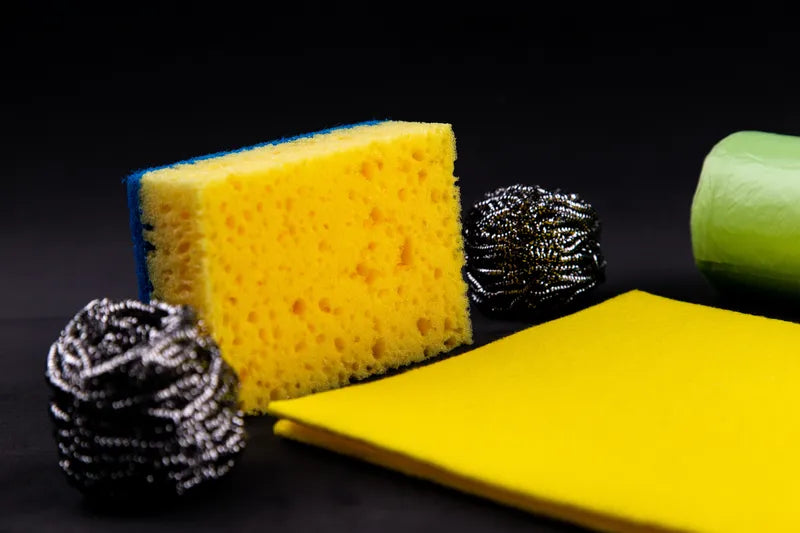
Top tips for easy cleaning
Proper and regular cleaning of your reusable water bottle is essential to maintain its hygiene and extend its lifespan. One of the most effective and recommended ways to clean your water bottle is through hand washing. Not only does hand washing ensure a thorough clean, but it also helps in preserving the outer coating of your water bottle, keeping it in good shape for a longer time compared to using a dishwasher with high heat.
When you hand wash your water bottle, you have better control over the cleaning process. You can use a gentle dish soap or a mixture of warm water and baking soda to clean the interior and exterior of the bottle. A more gentle wash ensures that the outer coating, usually a powder paint coat is not subjected to the harsh abrasives that can occur in a dishwasher, preventing the colour from fading over time.
Another benefit of hand washing is the ability to pay extra attention to intricate parts like lids, straws, and seals. These parts often require extra care and precision to ensure they're thoroughly cleaned and free from any lingering odours or residue. Hand washing allows you to reach and clean these areas with ease, maintaining the overall cleanliness and functionality of your water bottle.
Also, hand washing allows you to inspect your water bottle closely for any signs of wear and tear. Early detection of such issues can help you address them promptly, preventing any further deterioration and ensuring the longevity of your bottle.
To hand wash your water bottle effectively, start by taking off the lid and removing the straws if it’s a sports lid. Wash each part with a gentle detergent, warm water, and a soft brush or sponge. It’s for this reason that wide-mouth bottles are a great choice as the cleaning process is a breeze.
Pay special attention to the interior, as this is where residues and odours tend to accumulate. For stubborn stains or odours, you can use a mixture of warm water and baking soda, allowing it to sit for a few hours before rinsing. After washing, make sure to dry all components thoroughly or leaving the bottle and lid to air-dry before reassembling the straw and putting the lid back on your water bottle.
By choosing the hand washing method, not only are you ensuring a clean and safe water bottle, but you're also promoting its durability and preserving its the outer colour, allowing you to enjoy your reusable water bottle for a longer time.
Features to look for when buying the best kid’s water bottle
When on the hunt for the ideal water bottle for kids, a few crucial features should guide your selection process. First and foremost, consider the size of the bottle. Opting for a smaller capacity, around 350ml, is highly recommended for kids, as it's more manageable for their little hands and encourages regular hydration without overwhelming them with a large water bottle. A smaller-sized bottle is also easier to fit into lunchboxes or backpacks, making it convenient for school or outdoor activities.
Another essential feature is the lid design. Kids often find it easier to drink from bottles with straw lids or small caps. Straw lids, in particular, provide a spill-free drinking experience, allowing kids to sip without tilting the bottle too much. They're especially beneficial for younger children who might still be mastering the art of drinking from a regular cup or bottle.
On the other hand, small caps provide quick access and minimise spillage, ideal for active kids always on the move. Leak-proof designs are a must to avoid messes and ensure that the contents remain contained, whether the bottle is in a backpack or bouncing around on an adventure.
As with any kids product, durability is a must. Let’s face it, these bottles are going to be dropped a lot! Choosing a durable material like stainless steel is a good idea. Additionally, considering materials that are easy to clean and free from harmful chemicals, such as BPA and phthalates, is vital for the safety and well-being of your child.
A combination of these features ensures that the water bottle you choose for your child is not only practical and easy to use but also encourages healthy hydration habits from an early age, for example a 350 ml size stainless steel bottle with a wide mouth straw lid is the perfect choice.
What is my recommended daily water intake?
Determining your daily recommended water intake is essential for maintaining overall health and well-being. Having a reusable water bottle that you love will definitely help you achieve your daily water intake goals. The ideal amount of water someone should consume can vary based on several factors, including age, gender, physical activity level, climate, and overall health. However, a commonly cited rule of thumb is the "8x8 rule," which suggests drinking eight 8-ounce glasses of water per day, totalling around 2 litres or half a gallon.
More precise recommendations come from reputable health organisations like the Institute of Medicine (IOM). According to their guidelines, daily water intake (from all beverages and foods) should be about 3.7 litres (or about 13 cups) for men and 2.7 litres (approximately 9 cups) for women. This includes all fluids consumed, not just water, and about 20% of our daily water intake typically comes from food.
It's essential to note that individual hydration needs can vary. Factors such as climate and physical activity level can significantly influence how much water your body requires. In hotter climates or during vigorous exercise, you'll likely need to increase your water intake to compensate for higher levels of perspiration and prevent dehydration.
The best way to gauge your hydration needs is to listen to your body. Thirst is a reliable indicator; if you're thirsty, it’s probably too late already and your body is signalling that it needs more fluids. Additionally, the colour of your urine can be a useful indicator of hydration levels—pale, clear urine generally suggests adequate hydration, while darker urine indicates that you may need to drink more water.
Ultimately, staying adequately hydrated is crucial for overall health, helping in temperature regulation, digestion, nutrient absorption, and more. It's advisable to consult with a healthcare professional for personalised recommendations based on your specific circumstances and health status.
Choosing the right reusable bottle in 2023 will ultimately help you stay hydrated and healthier, whilst doing your bit for the planet.
Ocean Collection
View all
Elevate your sustainability status




